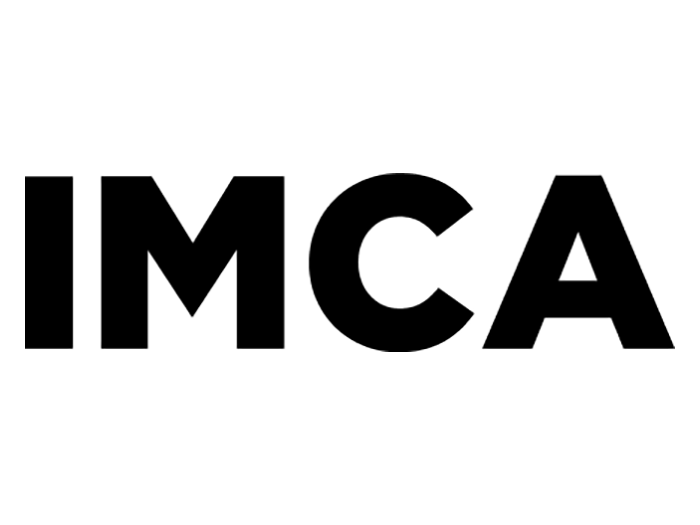Sponsored Content by Risk Strategies
The State of the Insurance Market: As 2025 Progresses, It’s Time to Review Risk Management Strategies

From increasingly severe and frequent climate-related events to escalating claims costs, today’s market challenges are top of mind for insurers and insureds alike.
Nuclear verdicts, AI integration, property and more — The State of the Insurance Market Report: 2025 Outlook from Risk Strategies dives deeper into the risks on top of everyone’s minds.
“Numerous factors influence risk, both internal and external,” said CEO of Risk Strategies John Mina.
“Every year, we look at these factors, break them down by industry and line, in an effort to provide a thorough understanding of these elements so that clients can begin to craft effective risk mitigation strategies.”
With Q1 2025 under our belts, it’s a good time to review what’s going on in the market, gleaning insight into today’s top challenges and the comprehensive risk management solutions that will ensure future success.
Key Observations

John Scroope, National Director of Retail Operations, Risk Strategies
After years of rising rates, the market appears to be stabilizing in many areas such as property, cyber and management liability, the report found. However, casualty and homeowners remain in an unstable “hard market.”
As noted, natural disasters and social inflation remain challenges for insureds of all types, as events like wildfire and hurricane become more frequent and increasingly severe, and nuclear verdicts and rising litigation expenses exacerbate claims severity.
Technology and artificial intelligence also introduce new vulnerabilities and threats, while geopolitical tensions build uncertainty for global insurers.
But even with the larger threats at play, there are risk management steps that can help aid insurers and their insureds.
“For starters, insurance should be approached as a fundamental component of the overarching business strategy, rather than something that’s addressed only at renewal,” shared John Scroope, National Director of Retail Operations, Risk Strategies.
“By looking at insurance throughout the process, insureds are being proactive about their potential vulnerabilities, as well as making sure their coverage aligns with their organizational goals.”
The report also noted that reviewing a broad spectrum of insurance options will go a long way toward supporting businesses’ long-term goals.
“Companies that look at all their options are companies that make informed decisions,” Scroope said. “That breeds resiliency, longevity, and adaptability.”
Commercial Lines
No two industries are alike, and while there are overarching risks all businesses must contend with, the Risk Strategies report took a closer look at the specific risks different industries face.
High production costs, coupled with volatile weather, evolving trade dynamics and international supply-demand shifts, have placed pressure on the agriculture sector. Rising input costs and narrow profit margins have amplified the need for robust crop insurance strategies. Not to mention, farms with unique risks should consider tailor-made policies to address their specific coverage needs.
Higher education is poised to face critical challenges as we continue to move into 2025, according to the report. The number of “traditional” college-age students is projected to decline by the end of this year, potentially leading to a drop in enrollment and financial strain for institutions. That could result in program cuts or closers.
As colleges and universities deal with lower enrollment, they may face increased competition, as other institutions vie for students’ favor.
In the P&C world, K-12 and higher education institutions have reported an increasing number of publicly reported large losses of at least $2.5 million. Not to mention, cyber threats are up, student mental health is a growing concern, and changing federal directives and legal compliance issues are putting more pressure on these facilities.
Healthcare is another industry facing unique challenges. With a steady, heavy volume of M&A activity, staffing shortages and reports of burnout, plus increased cyber incidents and AI-driven risks, these institutions are feeling the pinch.
“We anticipate incremental premium increased to continue for the foreseeable future to offset the risks of nuclear verdicts,” said Scroope.
In addition to the necessary coverages like property or workers’ compensation, the report recommends healthcare facilities review their professional liability policies, as well as workplace violence, as more workplace shootings and violent attacks continue to be a concern.
It’s also important to note that the impact of U.S. tariffs will contribute to financial uncertainty for importers, exporters, manufacturers and distributors. The report recommends businesses review their current policies to ensure accurate valuation of risk to better mitigate these challenges.
Following a prolonged period of challenging renewals, rate increases, and restrictions in terms, property market conditions have improved considerably for those in real estate. Insurers should still focus on building valuations, loss mitigation efforts, and tracking exposure accumulations.
Looking at private equity, firms are suffering from a lack of quality assets available in the market, interest rate uncertainty, lofty seller expectations for price and LP’s who want distributions, not capital calls, after many years of light distributions, according to the report.
D&O remains competitive and the pace of D&O premium decreases has slowed. There is hope this area is trending toward greater stabilization by the end of 2025 and into the early months of 2026. ESG (environmental, social, and governance); rolling back DEI initiatives; artificial intelligence; the SEC; and cybersecurity and data privacy will remain this sector’s biggest risks to watch in the coming months.
Employee Benefits

John Greenbaum, National Employee Benefits Practice Leader, Risk Strategies
Pharmacy’s influence on cost trends, an emphasis on fiduciary responsibility, strong emphasis on HR technology, pay transparency, and regulatory impacts related to absence management are the top challenges anticipated for employee benefits programs.
“Rising pharmacy costs continue to impact the employee benefits landscape,” noted John Greenbaum, National Employee Benefits Practice Leader, Risk Strategies.
Pharmacy innovation will continue with new opportunities to offer more cost-effective treatments in higher cost drug categories. Significant consideration needs to be given to current and expected pharmacy trends. Key areas for employers to focus on include GLP-1 drugs, specialty pharmacies including cell and gene therapy, biosimilars and fiduciary responsibility. Given the rapid pace of pharmacy innovation, employers should plan for a strategy that balances pharmacy cost while ensuring sustainable coverage and outcomes.
HR technology is another area employers should be looking at. With Artificial intelligence (AI) integration ramping up, HR teams need to explore its use in key areas such as benefits administration, learning and development, employee engagement, among others.
Pay is becoming an increasingly hot topic in the world of employee benefits, and many employers are looking at how they measure up against their peers, driving up the need for better technology and AI to compare and benchmark pay data.
According to Greenbaum, “Employers should prepare by staying proactive and leveraging data-driven strategies to balance cost, compliance, and employee satisfaction.”
Private Client Services

Alison Murphy, National Private Client Services Practice Leader, Risk Strategies
Like many industries, the private client sector also faces ongoing challenges, from severe weather events, regulatory complexity, and fluctuations in the reinsurance market.
However, looking ahead into 2025, Alison Murphy, National Private Client Services Practice Leader, Risk Strategies, said there is encouraging evidence that the market is stabilizing.
“2024 brought rising costs in property, auto and excess liability. Now we’re seeing the reinsurance market stabilizing, as insurers respond with strategic adjustments in rate, coverage and risk selection, particularly in CAT-prone areas,” Murphy said.
That said, the regulatory environment should remain top of mind for private client services, as carriers contend with greater risks, large-scale loss events and challenges surrounding compliance.
More insureds are turning toward excess and surplus lines due to fewer regulatory requirements placed on non-admitted insurance carriers. However, underwriting discipline is still required for these hard-to-place risks, so insureds must review their specific terms.
“It is important that insureds partner with a trusted insurance advisor to navigate this evolving risk landscape,” Murphy advised. “Engaging with an advisor who provides proactive guidance, access to critical risk prevention resources, and innovative solutions ensures you maintain comprehensive coverage at all times of the year— not just during renewals or claims.”
A Risk Management Dream Team
Perhaps the biggest takeaway from the report is that recent events have highlighted the critical importance of proactive risk assessment and mitigation efforts.
“As we progress through, 2025, organizations face a dynamic risk landscape shaped by evolving climate patterns, escalating claim costs and emerging systemic threats,” said Mina.
But there is a way forward: incorporating the right risk management tools early, actively working with your insurance team and staying proactive as uncertainty looms.
“Every business wants a partner that understands their unique needs,” Mina said.
The State of the Insurance Market Report: 2025 Outlook demonstrates Risk Strategies’ dedication to its clients, a deep understanding of the market challenges each industry faces, and an unwavering focus on resiliency.
“By proactively addressing each client’s concerns, risk areas and needs, Risk Strategies aims to enhance their resilience and better position businesses to thrive in the evolving risk landscape for 2025 and beyond.”
To view the whole report, visit: https://www.risk-strategies.com/state-of-the-insurance-market-report-2025-outlook
This article was produced by the R&I Brand Studio, a unit of the advertising department of Risk & Insurance, in collaboration with Risk Strategies. The editorial staff of Risk & Insurance had no role in its preparation.










